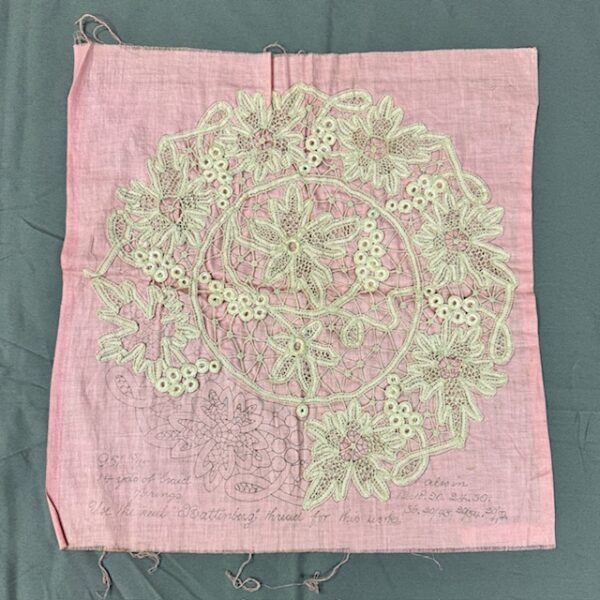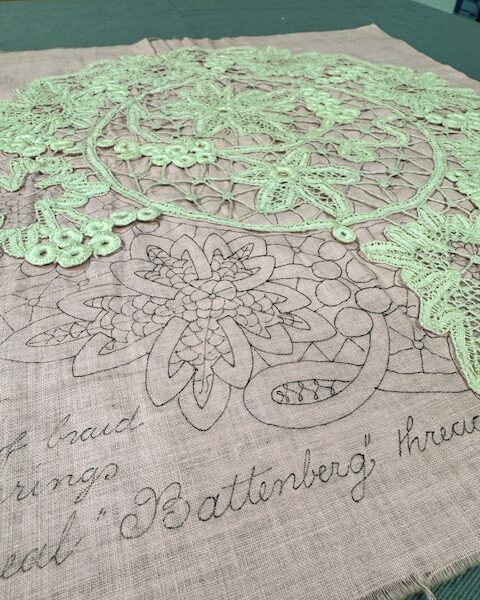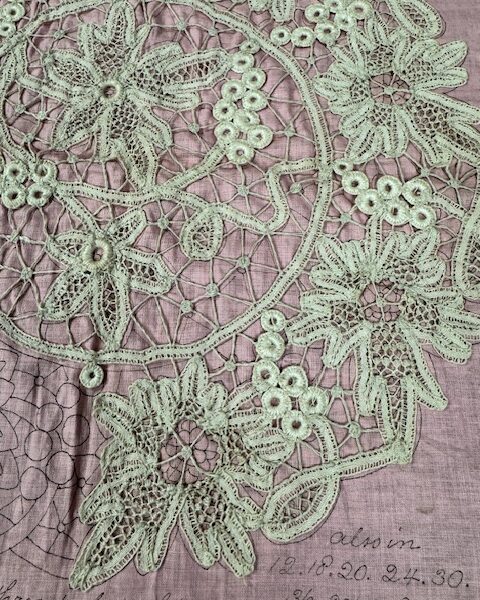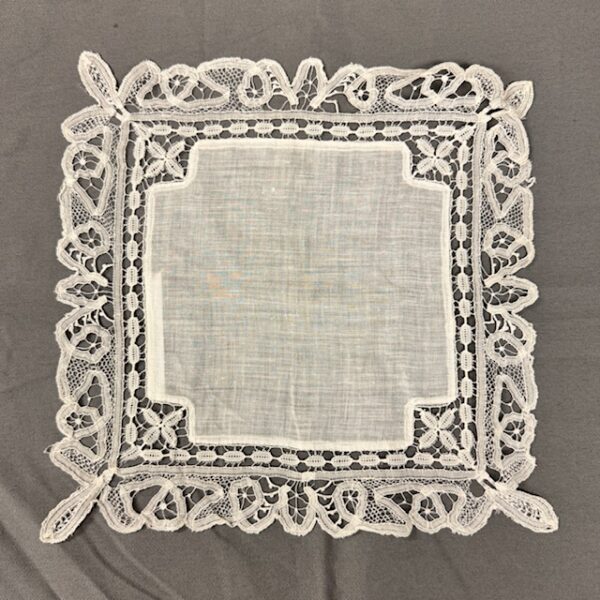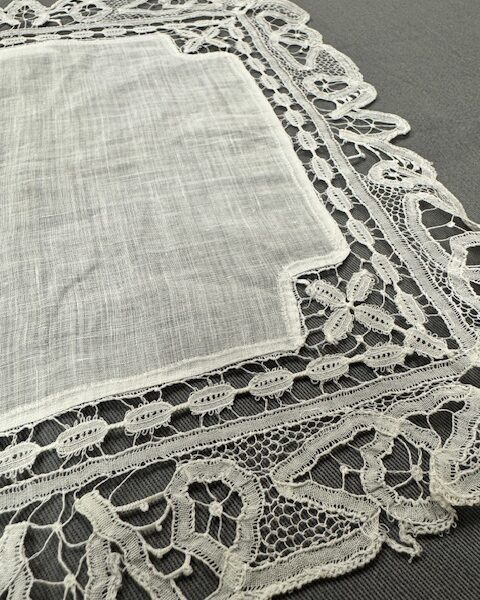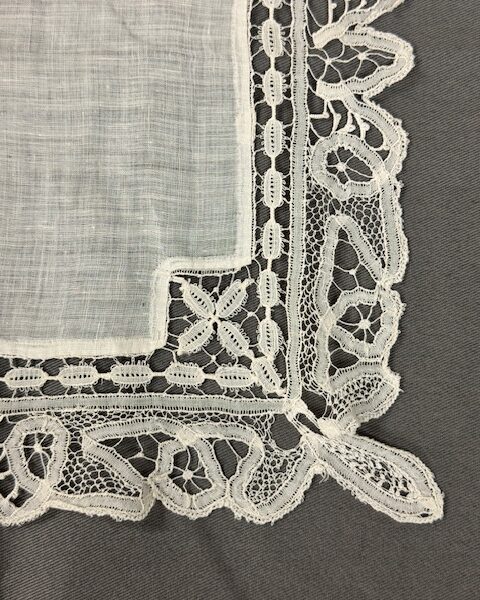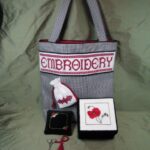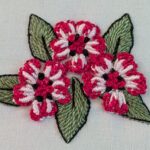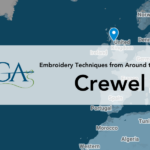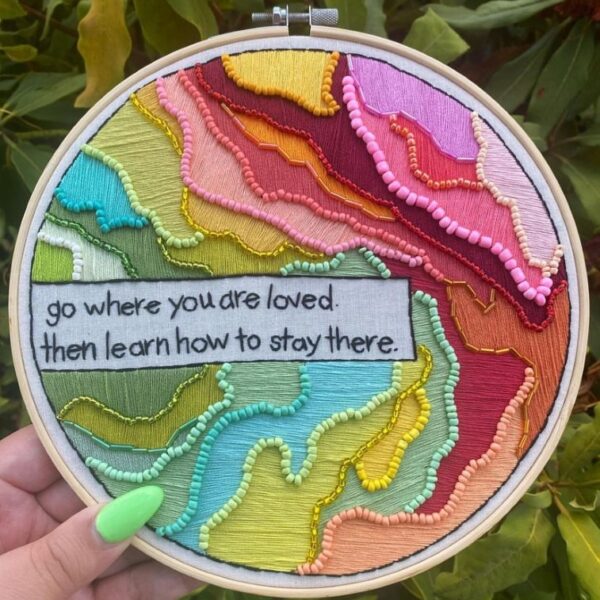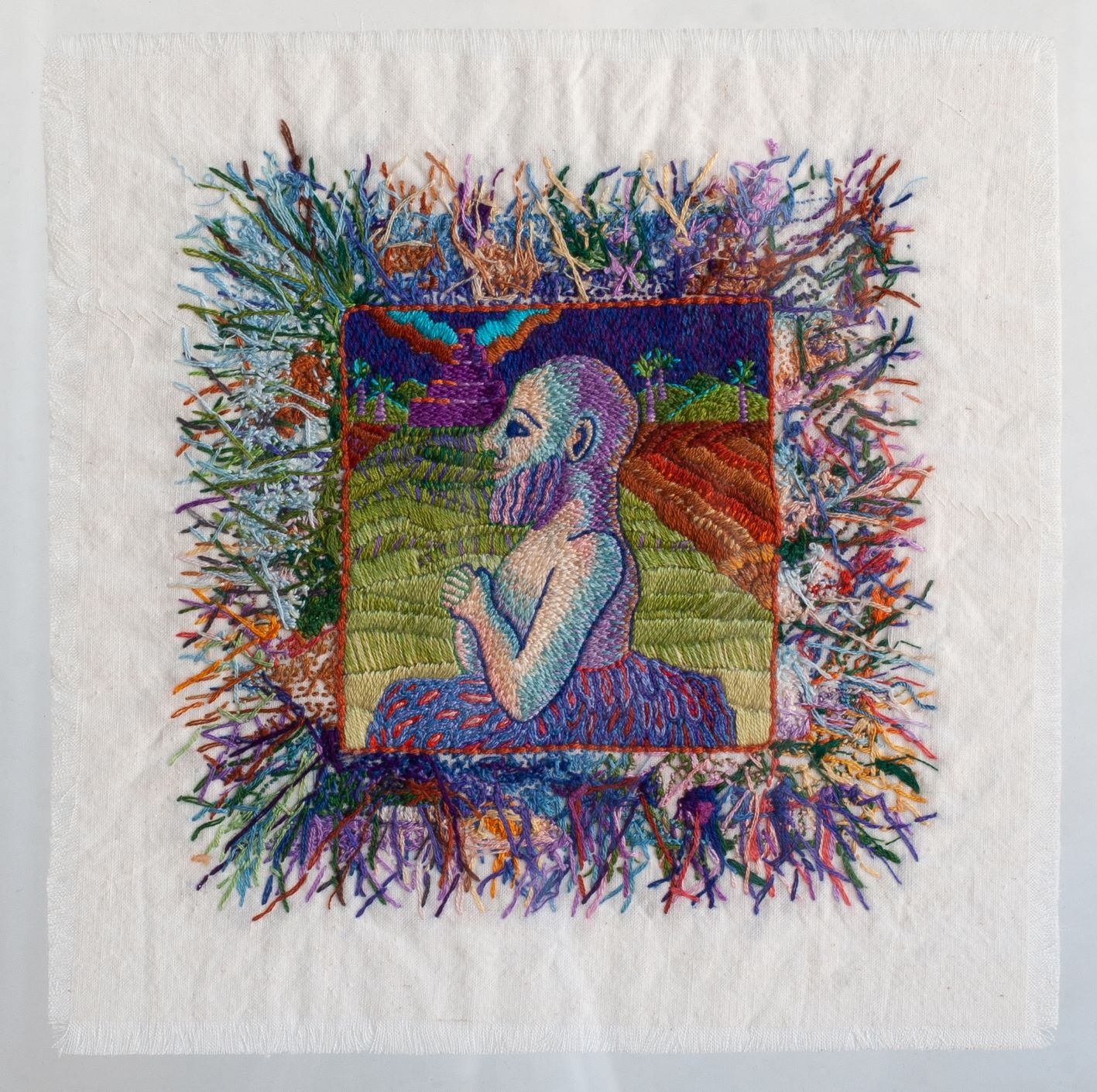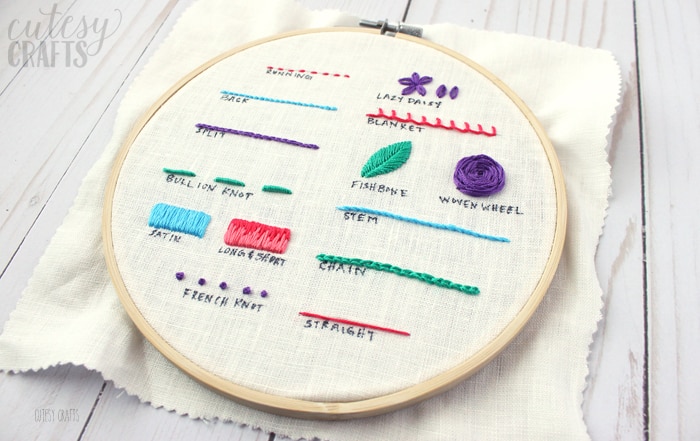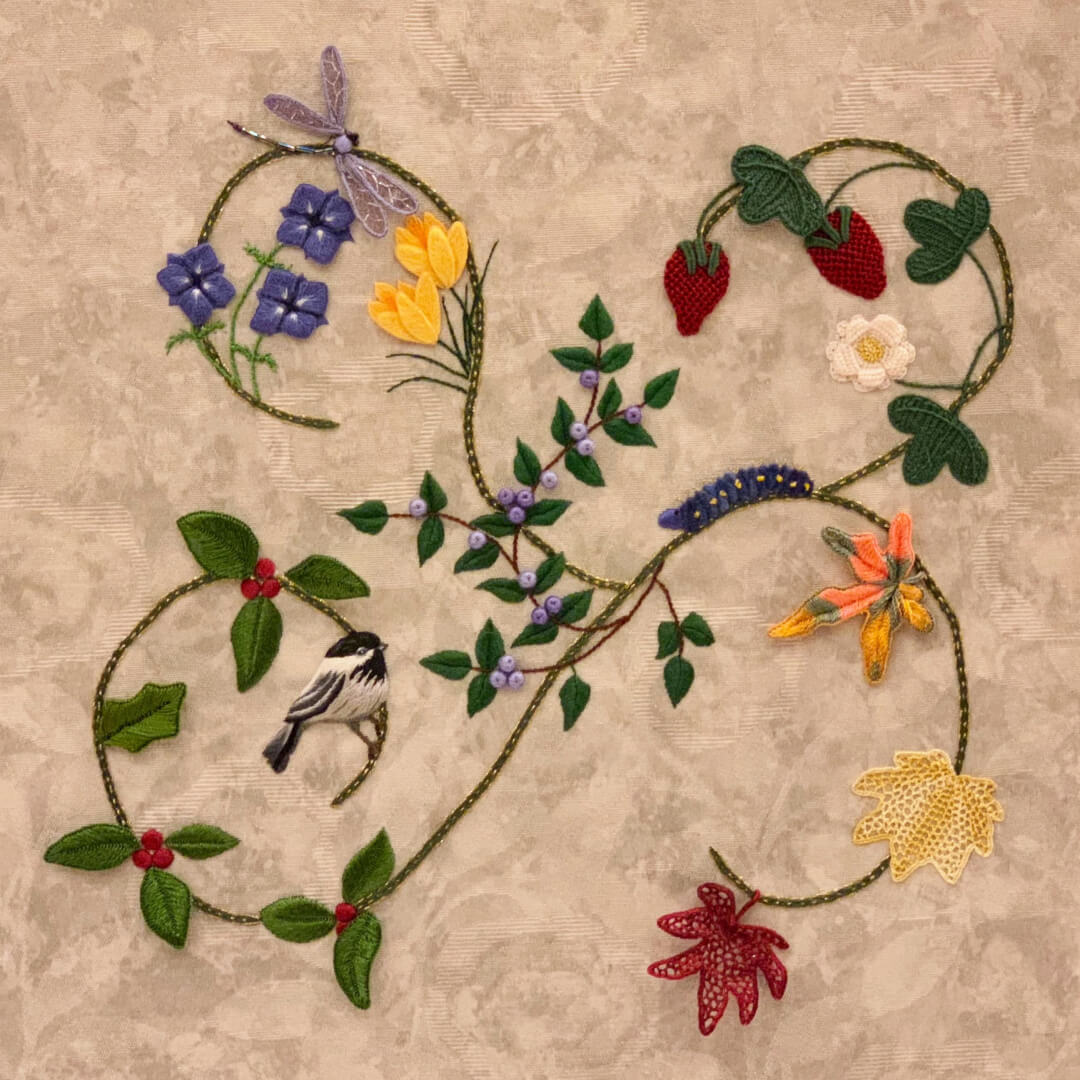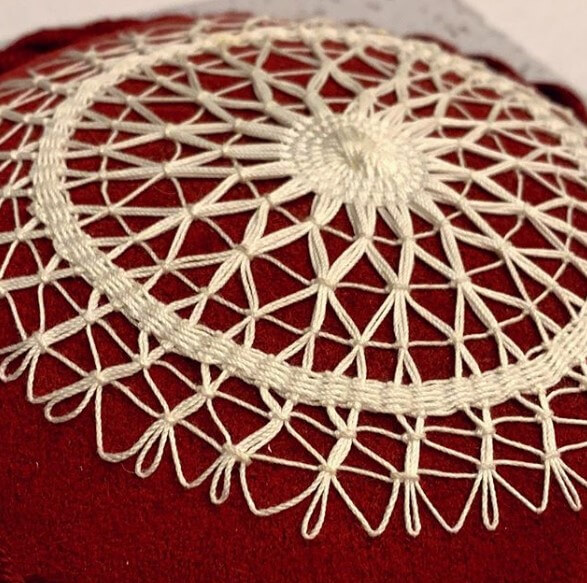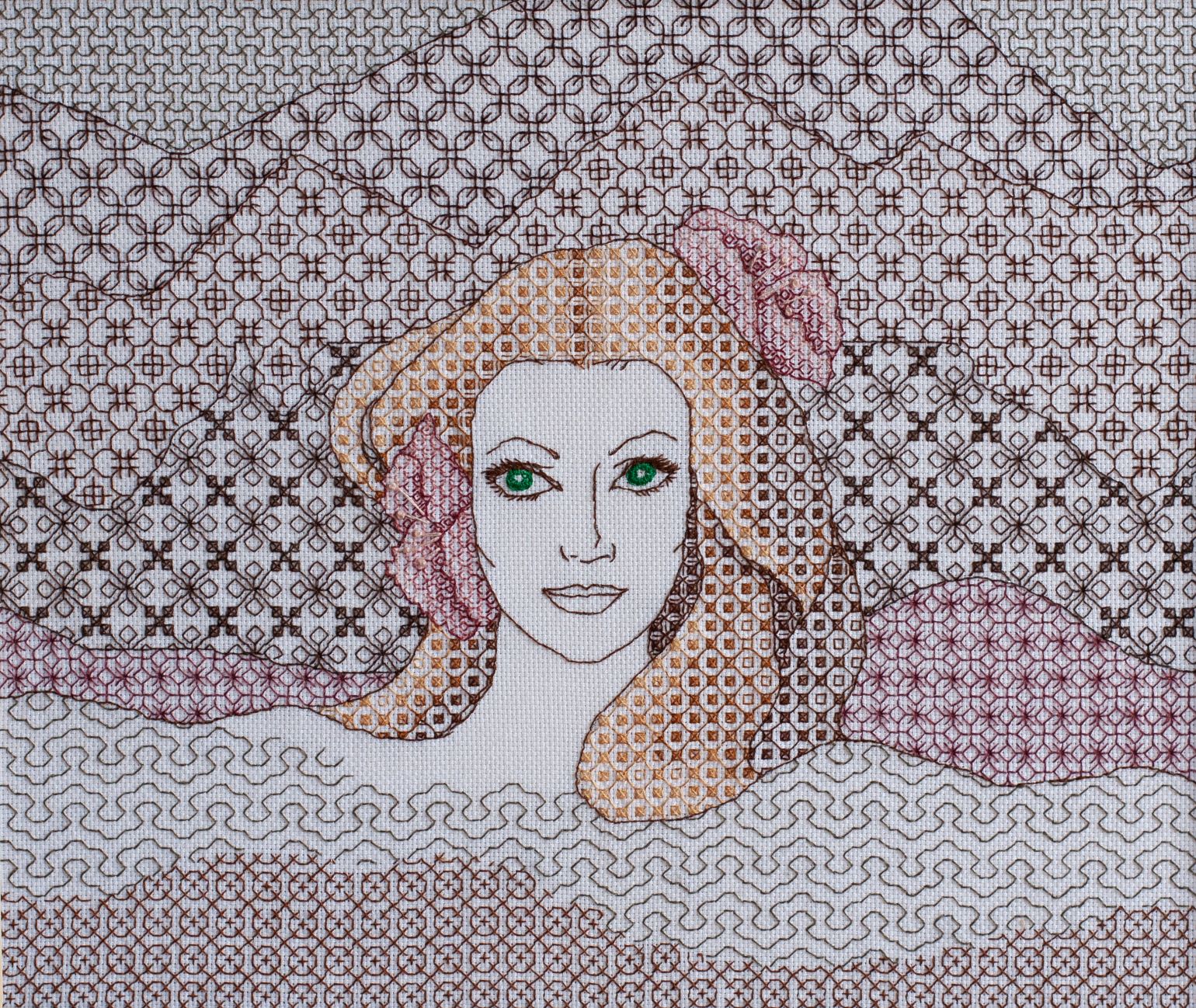Technique: Battenberg Lace
Place of Origin: New York, United States of America
Earliest known date: 1890s
History: Battenberg lace, also referred to as Royal Battenberg lace, first appeared in the late 19th century during a period of rapid evolution for lace-making. Industrialization and new needlework innovations drove the creation of Battenberg lace, which offered lacemakers the beauty and complexity of handcrafted Renaissance lace without the expense or time of the more arduous and demanding bobbin lace and needle lace techniques.
Battenberg lace is a form of tape lace, meaning that instead of building the lace structure from thread, the lace’s main shapes are first outlined using pre-made tape, typically a narrow braid, cord, or woven cotton. The open spaces between the tapes are then filled in by the embroiderer with needle lace stitches, creating decorative patterns.
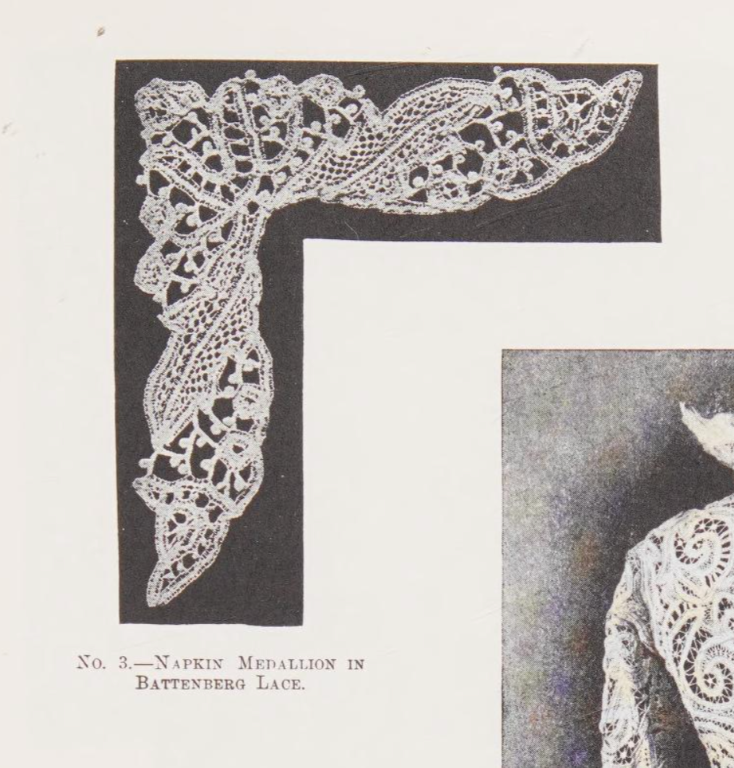
Today, the term Battenberg lace refers to a variety of tape laces. However, Sara Hadley, a renowned lacemaker and resident of New York City, is said to be the originator of the Royal Battenberg lace technique. The technique is named after Prince Louis of Battenberg, after his marriage to Princess Beatrice, Queen Victoria’s youngest daughter, in 1885.
Hadley published several books and patterns outlining various Battenberg lace designs, such as Battenberg and other tape laces: techniques, stitches, and designs, originally published in 1901 under the title Modern Lace Making: Advanced Studies. At the time, patterns and all the trimmings necessary to create Battenberg lace (cords, braids, rings, and appliques) could be ordered directly from Hadley. At the Chicago World’s Fair in 1893, Hadley won a gold medal in the Modern Lace category for a Battenberg lace design featuring grape vines and leaves.
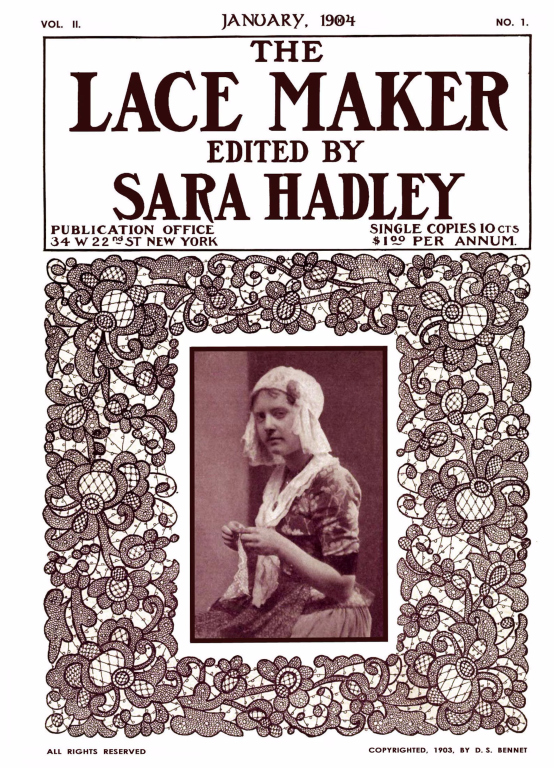
Battenberg lace featured most prominently in household linens and clothing—napkins, handkerchiefs, collars, tablecloths, cuffs, pillowcases, and table runners. In magazines like The Ladies Home Journal, Battenberg lace patterns and articles included diagrams and instructions to create pieces for the home.
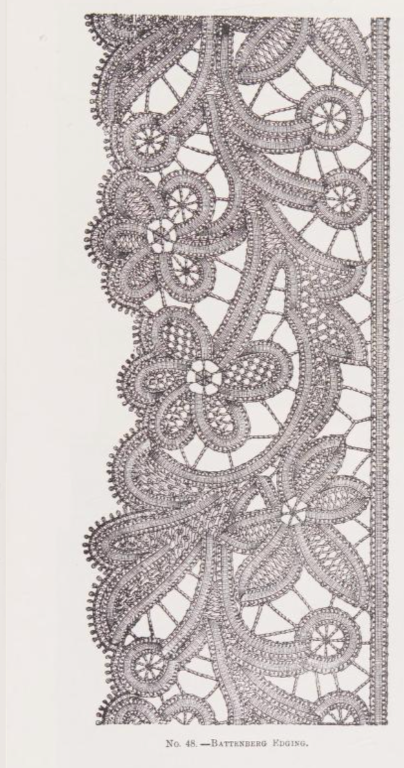
Materials
At the heart of Battenberg lace is the tape, which forms the framework of the design. Traditionally, this tape was a narrow cotton or linen braid, about 1/4 inch wide, with a tiny row of openwork or “picots” along the edges. These picots make it easier to anchor the needle lace stitches that will later fill the gaps.
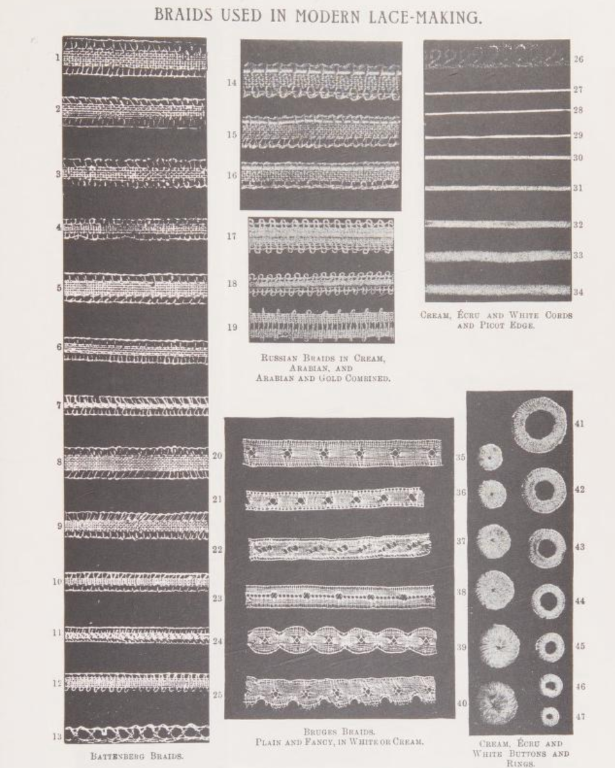
For connecting stitches and fillings, Battenberg lace traditionally uses cotton thread—typically in white or ecru for a classic look. Sizes vary depending on the delicacy of the piece, but size 30 to 60 crochet cotton is common. Modern variations may use embroidery floss, linen thread, or even colored threads for a contemporary twist.
Techniques and Stitches
Battenberg lace embroidery is built around a few simple yet beautiful needle lace stitches. Most of the work of the embroiderer happens between the tapes, where the stitcher creates openwork patterns that hold the tape framework together and bring texture to the lace. The embroiderer hand stitches designs between the machine-made braids and cords to join them and create a finished Battenberg lace piece.
Common stitches include buttonhole stitch (or blanket stitch), brides (bars), wheeling or spiderwebs, and darning stitches or filling patterns.

Motifs
Certain motifs have become hallmarks of Battenberg lace. Designs with elaborate scrolls and swirls, filigree fill patterns with decorative fillings like lattice and wheels, and geometric patterns such as diamonds and circular or oval medallions are very popular. Floral motifs popular during the Victorian era, such as lilies, roses, and daisies, can also be found throughout Battenberg lace designs.
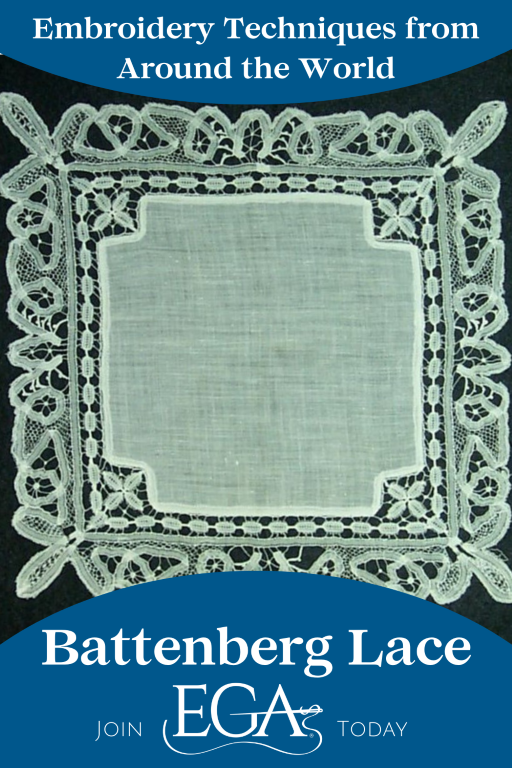
Sara Hadley and Royal Battenberg Lace. Piecework Magazine. https://shop.longthreadmedia.com/products/piecework-september-october-1995-digital-edition
Battenberg Lace. In Wikipedia. https://en.wikipedia.org/wiki/Battenberg_lace
Hadley, S. (1988). Battenberg and other tape laces : Techniques, stitches, and designs. New York: Dover. https://archive.org/details/battenbergothert0000hadl/page/64/mode/2up
(n.d.). Battenburg Tape Lace. TRC Leiden. https://trc-leiden.nl/trc-needles/regional-traditions/europe-and-north-america/lace-types/battenburg-tape-lace
Chase, M. C. (2004). American Lace [Master’s Thesis, Winthrop University]. https://www2.cs.arizona.edu/patterns/weaving/monographs/cmc_lace.pdf
Brown, N. C. (1900). How to make Battenburg and point lace. Boston, Mass., The Priscilla Publishing Company. https://archive.org/details/howtomakebattenb00brow/page/n5/mode/2up
